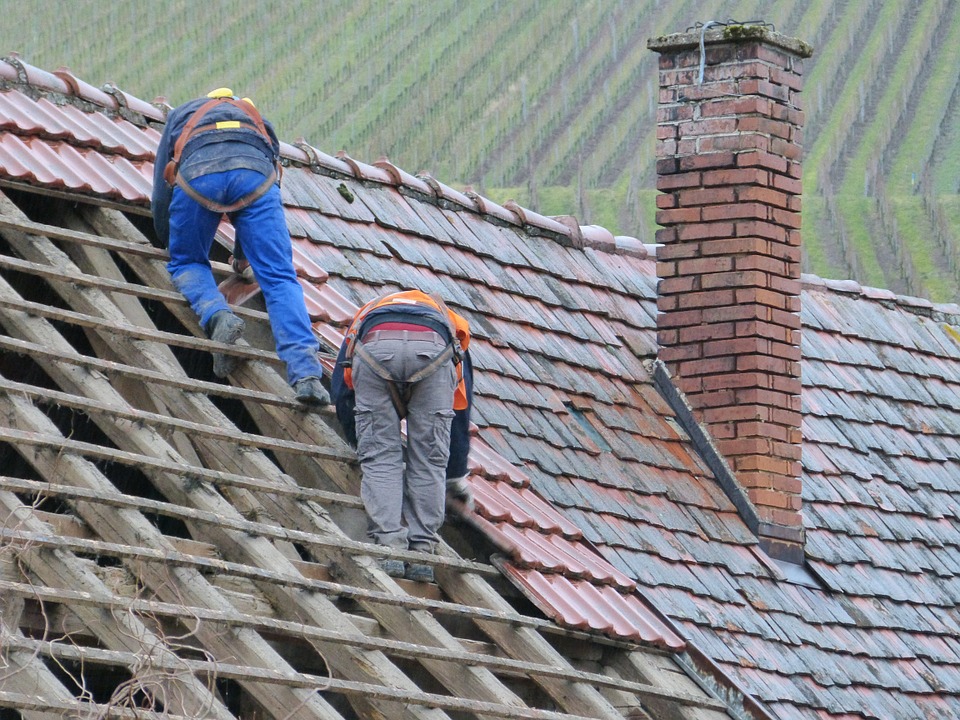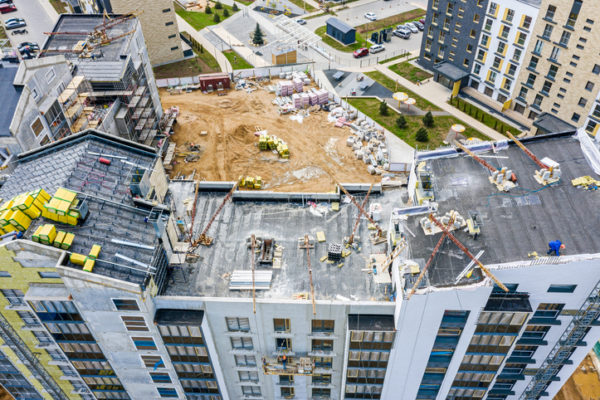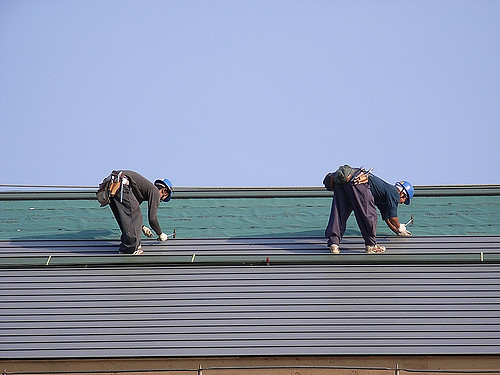A building’s roof is one of its most critical components. A good, sound roof protects the rest of the building from water intrusion and other damaging elements from outside. But when something goes wrong, or the roof reaches the end of its useful life, it can be one of the most expensive elements to fix.
That’s why it’s important to consider the option to repair rather than replace. A good and timely repair can offer substantial cost savings. On the other hand, in some cases, a repair is merely a costly band-aid over a problem that will have to be addressed soon anyway. In this article, we discuss four key factors to consider when making the decision whether to repair or replace a commercial building’s roof:
- Age of the Roof and Cost of the Repair
- The Cause of the Problem
- The Status of the Warranty
- Potential Tax Incentives
Age of the Roof (and Cost of Repair)
All roofs have an expected useful life, depending on the type of roof, materials, conditions, and installation. The nearer the roof is to the end of its expected useful life, the more likely a replacement is the more cost-effective option. Cost of repair also plays a role–a very inexpensive repair may be worthwhile even on a roof near the end of its useful life.
In general, in Florida, you can expect about 20 years from a “flat” roof–more properly called a low-slope roof. Sloped roofs may give between 12 years (for some asphalt shingle) and 50 years (for some barrel tile roofs).
The Cause of the Problem
A common mistake building owners make is assuming that if leaks occur repeatedly, the entire roof is faulty and should be replaced. But repeat leaks often have more to do with installation errors than the roof itself, and a proper repair can be a much lower cost option.
The first place to look when this happens is at any penetrations in the roof. Penetrations are areas where holes are punched through the roof–such as for mechanical equipment stands. If leaks are occurring at penetrations, then you probably had a bad installation. Depending on the number of penetrations, it’s likely that repairing the flashing will fix your problem much more efficiently than a complete replacement.
On the other hand, if the leaks are coming through seams in different roofing materials, then it may make more sense to replace.
The Status of the Warranty
If your roof has an active NDL (no dollar limit) roof warranty, then obviously you will want to get repairs or replacement done while it is under warranty. However, warranties on roofs can be a pain. For one thing, many warranties are prorated, meaning you will only get credit for the remaining life of the roof. Furthermore, the manufacturer’s warranty is separate from the installation warranty, and if there’s any reason for one of those parties to blame the problem on the other they will. This can trap the building owner in a frustrating no-man’s-land where no one wants to take responsibility for the faulty roof.
When deciding whether to repair or replace, it pays to understand the terms of your warranty, how close you are to the end of the warranty, and whether the cause of the problem falls under manufacturer or installation warranty.
Potential Tax incentives
Depending on your area, there may be tax incentives available for installing energy-efficient roofing. Additionally, some roof repairs can be tax deductible. These can have a significant impact on the cost-effectiveness of your repair or replace decision. Check your local, state, and federal tax guidelines.
Evaluating Your Needs
Your building’s roof is a major and important investment. It can be valuable to have a professional evaluate the condition of your roof and identify the most cost-effective manner of repairing or replacing it. GLE’s team of roofing consultants are experts in evaluating all of the factors involved in the cost equation, and are familiar with federal tax incentives as well as state and local incentives throughout Florida and the Southeastern U.S. Contact us today for a professional evaluation.





